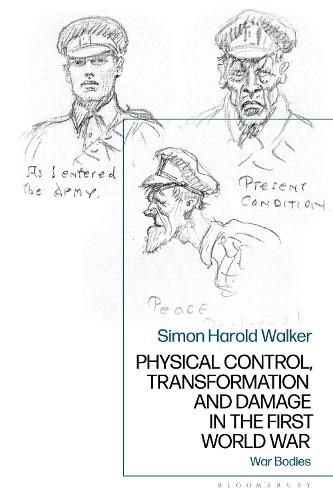Readings Newsletter
Become a Readings Member to make your shopping experience even easier.
Sign in or sign up for free!
You’re not far away from qualifying for FREE standard shipping within Australia
You’ve qualified for FREE standard shipping within Australia
The cart is loading…






From enlistment in 1914 to the end of service in 1918, British men’s bodies were constructed, conditioned, and controlled in the pursuit of allied victory. Physical Control, Transformation and Damage in the First World War considers the physical and psychological impact of conflict on individuals and asks the question of who, in the heart of war, really had control of the soldier’s body.
As men learned to fight they became fitter, healthier, and physically more agile, yet much of this was quickly undone once they entered the fray and became wounded, died, or harmed their own bodies to escape. Employing a wealth of sources, including personal testimonies, official records, and oral accounts, Simon Harold Walker sheds much-needed light on soldiers’ own experiences of World War I as they were forced into martial moulds and then abandoned in the aftermath of combat.
In this book, Walker expertly synthesizes military, sociological, and medical history to provide a unique top-down history of individual soldiers’ experiences during the Great War, giving a voice to the thousands of missing, mutilated, and muted men who fought for their country. The result is a fascinating exploration of body cultures, power, and the British army.
$9.00 standard shipping within Australia
FREE standard shipping within Australia for orders over $100.00
Express & International shipping calculated at checkout
From enlistment in 1914 to the end of service in 1918, British men’s bodies were constructed, conditioned, and controlled in the pursuit of allied victory. Physical Control, Transformation and Damage in the First World War considers the physical and psychological impact of conflict on individuals and asks the question of who, in the heart of war, really had control of the soldier’s body.
As men learned to fight they became fitter, healthier, and physically more agile, yet much of this was quickly undone once they entered the fray and became wounded, died, or harmed their own bodies to escape. Employing a wealth of sources, including personal testimonies, official records, and oral accounts, Simon Harold Walker sheds much-needed light on soldiers’ own experiences of World War I as they were forced into martial moulds and then abandoned in the aftermath of combat.
In this book, Walker expertly synthesizes military, sociological, and medical history to provide a unique top-down history of individual soldiers’ experiences during the Great War, giving a voice to the thousands of missing, mutilated, and muted men who fought for their country. The result is a fascinating exploration of body cultures, power, and the British army.